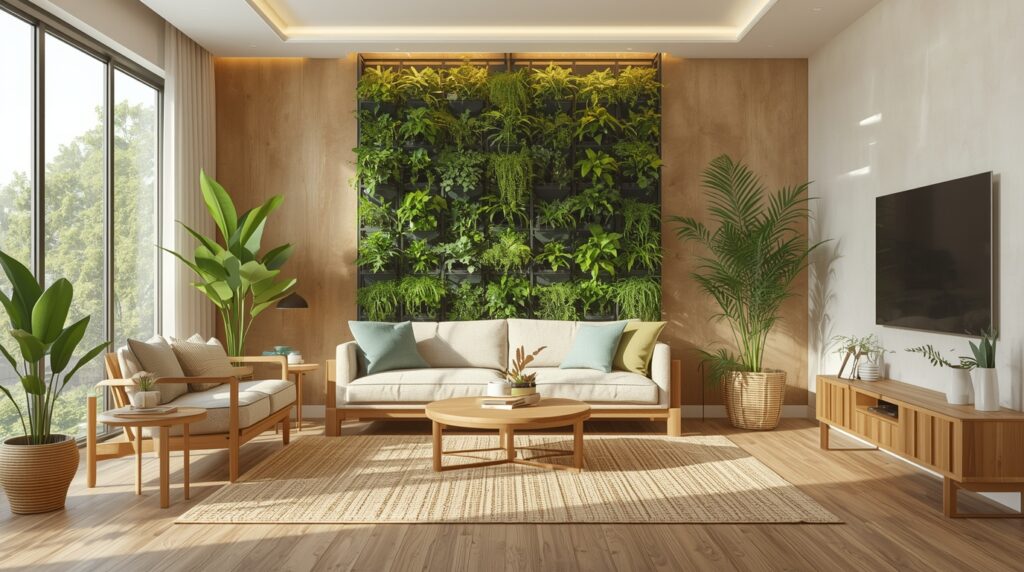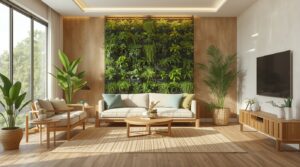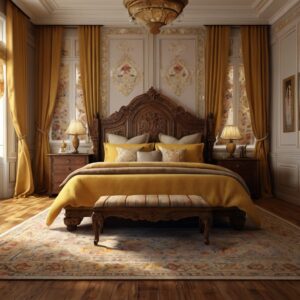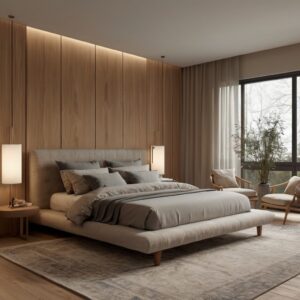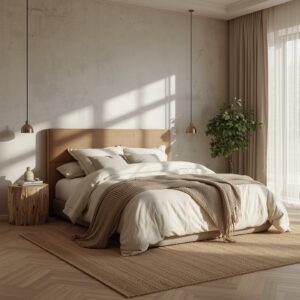In today’s world of rapidly increasing pollution and global warming, eco-friendly interior design not only beautifies your home but also protects the environment. It not only helps make your home natural and healthy, but also proves to be long-lasting and quite economical.
What is Eco-Friendly Interior Design?
Eco-friendly interior design means using materials and ideas in home decoration and construction that do not harm the environment. It also includes the use of natural materials, recycling, and energy-saving products.
Benefits of Eco-Friendly Interior Design
- Environmental protection – This design reduces pollution.
- Healthy lifestyle – Toxic-free paints and natural materials maintain a clean environment in the home.
- Energy saving – LED lights, natural light, and solar systems reduce electricity costs.
- Economical and durable – Natural materials last longer.
- Attractive look – Greenery and natural touches give the home a modern and unique look.
Key Elements of Eco-Friendly Interior Design
1. Use Sustainable Materials
- Use bamboo, cork, reclaimed wood, and natural stone.
- Adopt recycled furniture and organic fabrics (cotton, jute, linen).
2. Natural Lighting & Ventilation
- Increase natural light and ventilation through larger windows and skylights.
- This will also reduce energy consumption.
3. Non-Toxic Paints & Finishes
- Use low VOC paints.
- This improves indoor air quality and is safer for health.
4. Importance of Indoor Plants
- Plant indoor plants to bring greenery into your home.
- These increase oxygen and make the decorations look natural.
5. Energy-Efficient Appliances
- Use LED lights, smart thermostats, and energy star-rated appliances.
- This promotes an eco-friendly lifestyle by reducing electricity consumption.
6. Water Conservation
- Adopt water-saving taps and rainwater harvesting systems.
- Water can be saved by installing dual flush systems in modern bathrooms.
7. Minimalism & Recycling
- Avoid unnecessary furniture and plastic items.
- Recycle and reuse old items.
How to Implement Eco-Friendly Design in Different Areas
Living Room
Bamboo furniture, jute rugs, and large windows.
Plant indoor plants like snake plants and peace lilies
Bedroom
- Organic cotton bedsheets and curtains.
- Low VOC paints and warm LED lighting.
Kitchen
- Recycled glass countertops and modular storage.
- Energy-efficient refrigerator and induction stove.
Bathroom
- Water-saving showerheads and dual flush system.
- Natural stone tiles and eco-friendly cleaning products.
Why Eco-Friendly Interior Design is the Future?
Today, people are becoming more health-conscious and environmentally aware. Eco-friendly design is not only a trend but also a responsible lifestyle choice. Sustainable and eco-friendly homes will be in highest demand in the future.
Conclusion
Eco-friendly interior design makes your home beautiful, healthy, and sustainable. It’s a design approach that considers both nature and comfort. If you’re considering decorating your home, choosing eco-friendly options is the best option.

